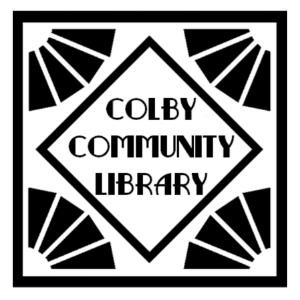
Hours
Mon. 9 am - 5 pm
Tue. Noon - 7 pm
Wed. 9 am - 5 pm
Thurs. Noon - 7 pm
Fri. 9 am - 5 pm
Sat. *9 am - Noon
*Open June - Aug
Sat. Closed Sept. - May
Sun. Closed
Railroad History
All Aboard for Colby Railroad History
Before 1870, other than along rivers, the territory in the Colby area of Northern Wisconsin was undeveloped. In 1870, the Wisconsin Central Railroad, a company of speculators, formed to build 250 miles of railroad track from Menasha to Ashland. Besides the anticipated income from freight hauling of lumber and potential passenger revenue, the speculators could claim substantial amounts of free government land for each mile of track laid.
From June-November 1871, the first 63 miles of track was constructed between Menasha and Stevens Point. Between March and September 1872, the construction crew had extended the track through the forests north and west of Stevens Point for 51 miles. However, work was then halted because of financial difficulties, caused in part by the economic crisis in Europe and major fires in both Boston and Chicago.
For a while it looked as though the whole project would collapse, but Gardner Colby, an Eastern financer who was president of the railroad company, succeeded in raising sufficient funds to keep the project going. The place where the work stopped had become a settlement of about 100 inhabitants. Initially called Station 51, it was later named Colby after the Gardner’s son, Charles L. Colby.
Upon completion of the rail line, settling increased rapidly, and a number of sawmills were built. At Colby, a farming settlement sprang up. Additionally, the townships of Hull and Holton attracted many settlers. A major factor in this growth was because a large amount of government land was available for homesteading. While these settlers had to go through the same experiences as earlier pioneers, they were a little nearer to supplies along the rail line. Settlers still had to cut the roads themselves and were deprived of many comforts for some years, but their compensation for braving the wilderness came sooner because they were near markets and the railroad that connected them to civilization
The final spike completing this original contract was not driven until May 1877. Once the Wisconsin Central had reached Ashland, further expansion was directed towards reaching St. Paul to the West and Chicago to the South.
The first move westward was construction of 54 miles of track between Colby Junction, now called Abbotsford, and Chippewa Falls, which was completed by December 1880. Construction towards Chicago was finally completed in July 1886. The Wisconsin Central also built 25 miles of track from Ashland to Bessemer, Michigan. This line was used to move iron ore, an important source of revenue when the profits generated by logs and lumber ceased.
In 1889, the Wisconsin Central entered into an agreement with the Northern Pacific to run trains between St. Paul, Ashland, and Chicago. This lease offered great promise but ended in failure in April 1893 when the Northern Pacific filed for bankruptcy and the Wisconsin Central was also forced into receivership.
Reorganized in 1894, Wisconsin Central began its final expansion in 1905; a track beginning at Owen and running to Duluth was constructed. By 1907, for a variety of reasons, the consolidation of the Wisconsin Central with other railroads became the subject of rumor. Later the same year, a majority of the Wisconsin Central stock was acquired by the Minneapolis-St. Paul and Sault Ste. Marie Railroad commonly known as the Soo Line. In April 1909, the Soo Line gained control of all Wisconsin Central property, thus bringing an end to the independent Wisconsin Central Railroad.
Wisconsin Central continued to operate until December 31, 1960; at that time, it was merged to create the Soo Line railroad company. Since then, the Soo Line has been acquired by the Canadian National railroad.
To keep the memory of local railroad history alive, the Colby Rural Arts Museum has secured a caboose to add to the museum grounds. Repair work is being done on the depot and caboose. Donations are being accepted to aid in the project. Mail your contribution to Colby Rural Arts Museum/P.O. Box 73/ Colby, WI 54421.
*Thanks to Lee Kaschinska, Colby Rural Arts Museum Caboose Project Coordinator, for contributing information for this article.
